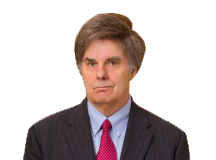A Calfee First Alert published December 21, 2018 posed the question: “Who Commits Securities Fraud?” At the time, the U.S. Supreme Court had just heard final arguments in Lorenzo v. Securities and Exchange Commission, which raised a fundamental question going to the scope of liability under general antifraud provisions of the federal securities laws which prohibit materially false or misleading statements, and more broadly, “devices,” “schemes,” and “artifices” to defraud in connection with the purchase or sale of securities. In Lorenzo, the Supreme Court had to answer the question of who commits securities fraud by resolving whether an individual may be directly liable for violating antifraud provisions of the federal
securities laws based on false and misleading statements contained in emails he sent to prospective investors in a securities offering at the request of his boss, who supplied and approved the content. Lorenzo did not “make” the false and misleading statements in the emails. He did, however, send them with knowledge that they contained materially false and misleading statements.
Key antifraud provisions of the federal securities laws make it unlawful to “make any untrue statement of a material fact” in connection with the purchase or sale of a security. But other parts of these provisions also make it unlawful to engage in any conduct constituting a “device, scheme, or artifice to defraud.” The U.S. Securities and Exchange Commission (SEC) concluded in an administrative
enforcement action brought against Lorenzo that by sending the emails, although he was not the “maker” of the false and misleading statements, Lorenzo nevertheless employed a device, scheme or artifice to defraud within the broader antifraud prohibition when at the request of his boss and with content supplied by his boss, Lorenzo sent emails to the prospective investors which he understood to contain material untruths. At the relevant time Lorenzo was the director of investment banking at a small New York securities firm, and the SEC imposed heavy sanctions on him that included a lifetime bar from working in the securities industry. He appealed to the U.S. Court of Appeals for The District of Columbia Circuit, where he lost. The U.S. Supreme Court agreed to hear his further
appeal.
With a decision rendered March 27, 2019 the Supreme Court affirmatively answered the question whether Lorenzo violated federal securities law antifraud provisions, specifically §10(b) of the Securities Exchange Act of 1934, along with SEC Rule 10b-5, and §17(a)(1) of the Securities Act of 1933. The Justices voted 6-2 (Justice Kavanaugh having recused himself) to affirm the judgment of the D.C. Circuit Court of Appeals that although he did not “make” the false and misleading statements in the emails, Lorenzo’s actions in sending them at the request of his boss and knowing they contained the statements brought him within the reach of the broader antifraud provisions addressing devices or schemes. Justice Breyer, writing the majority opinion, said succinctly: “[I]t is
difficult to see how his actions could escape the reach of those provisions.”
As discussed in our December First Alert, the central issue in Lorenzo was the scope of broad provisions in the antifraud provisions of the federal securities laws making it unlawful to employ any “device, scheme or artifice to defraud” when a separate specific provision makes it unlawful to “make any untrue statement of a material fact.” Lorenzo had argued, not without meaningful prior analysis by the Supreme Court discussed in our December First Alert, that because he was not the “maker” of the misstatements, and because the only conduct at issue involved or concerned misstatements, he could not be found to have violated the antifraud provisions dealing with
things other than materially false or misleading statements. The Supreme Court definitively resolved that question. Those who do not “make” false or misleading statements, but who disseminate them to potential investors with intent to defraud, violate other parts of SEC Rule 10b-5, as well as other related provisions of the securities laws. By sending emails he understood to contain materially false or misleading statements, Lorenzo employed a device, scheme or artifice to defraud, and engaged in an act, practice, or course of business that operated as a fraud or deceit expressly within the ambit of the antifraud provisions.
Speaking for the Court, Justice Breyer emphasized that using false representations to induce the purchase or sale of securities “would seem a paradigmatic
example of securities fraud.” That liability for false or misleading statements and conduct involving them should fall exclusively upon persons who actually “make” such statements, he said, would mean that those who disseminate false statements with the intent to cheat investors might escape liability altogether. “We do not know why Congress or the Commission would have wanted to disarm enforcement in this way."
Justices Thomas, joined by Justice Gorsuch, dissented from the majority opinion in the case. Justice Thomas argued that a person who has not “made” a fraudulent misstatement and who lacks ultimate authority over the statement should not be found primarily liable for it. Such a person could, he said, be liable as an aider and abettor under principles of secondary
liability, and such a distinction should be maintained.

Guest author Bob Rapp is a retired Partner, formerly with Calfee's Securities and Capital Markets Practice Group. He is a Visiting Assistant Professor of Law at the Case Western Reserve University School of Law, where he teaches courses in securities and financial market regulation and supervises international student doctoral level research and dissertation work. He is a frequent writer and presenter on capital markets regulatory issues.